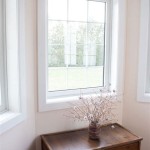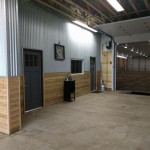Painting your house’s interior can be a daunting task and one that requires careful consideration. One of the primary considerations is the cost associated with painting the interior of your house. In this article, we’ll take an in-depth look at the cost of painting a house interior, covering the various factors that may impact the final cost.
Factors That May Affect Cost
The cost of painting a house interior is dependent upon a number of different factors. These include the size of the room or rooms being painted, the type of paint being used, the complexity of the project, the number of coats of paint, the labor costs, any additional materials needed, and any other relevant costs. Let’s take a closer look at each of these factors.
Size of Room(s)
The size of the room or rooms being painted is one of the primary factors that will impact the cost of painting the interior of your house. The larger the room or rooms, the more paint and labor will be required and thus the higher the cost. For larger rooms, it is important to factor in additional costs for masking and drop cloths.
Type of Paint
The type of paint being used will also influence the cost of painting the interior of a house. Generally, higher quality paints will cost more than lower quality paints but they may also last longer and require fewer coats. It is important to consider the long-term costs and benefits of using different types of paint when budgeting for a painting project.
Complexity of Project
The complexity of the project is also a factor that may affect the cost of painting a house interior. Projects that require more intricate designs or patterns, or those that require a lot of masking and drop cloths, will generally cost more than simpler projects. It is important to factor in the complexity of the project when calculating the cost of painting.
Number of Coats
The number of coats of paint being applied is also a factor that will influence the cost of painting a house interior. Generally, more coats of paint will require more paint and more labor, thus resulting in higher costs. It is important to consider the long-term benefits of applying more coats of paint, such as better durability and better coverage, when weighing the cost of the project.
Labor Costs
Labor costs are also a factor that will affect the cost of painting the interior of a house. The amount of labor required to complete a project will depend upon the size of the project, the complexity of the project, and the number of coats of paint that are being applied. Generally, larger projects and more complex projects will require more labor and thus will result in higher labor costs.
Additional Materials
In addition to the cost of the paint and labor, there may also be additional costs associated with a painting project. These additional costs may include the cost of masking and drop cloths, brushes, rollers, and any other materials needed for the project. It is important to factor in these costs when calculating the total cost of a painting project.
Conclusion
Painting the interior of a house can be a daunting task and one that requires careful consideration. The cost of painting a house interior is dependent upon a number of different factors, including the size of the room or rooms, the type of paint being used, the complexity of the project, the number of coats of paint, the labor costs, and any additional materials needed. It is important to consider all of these factors when calculating the cost of a painting project.















Related Posts








